

CarExpert.com.au
Model range deep-dive: Mahindra's SUV family
4 Days Ago
The updated Volkswagen Tiguan keeps its core strengths while adding more tech and features. Is the base model worth nearly Audi Q3 money though?
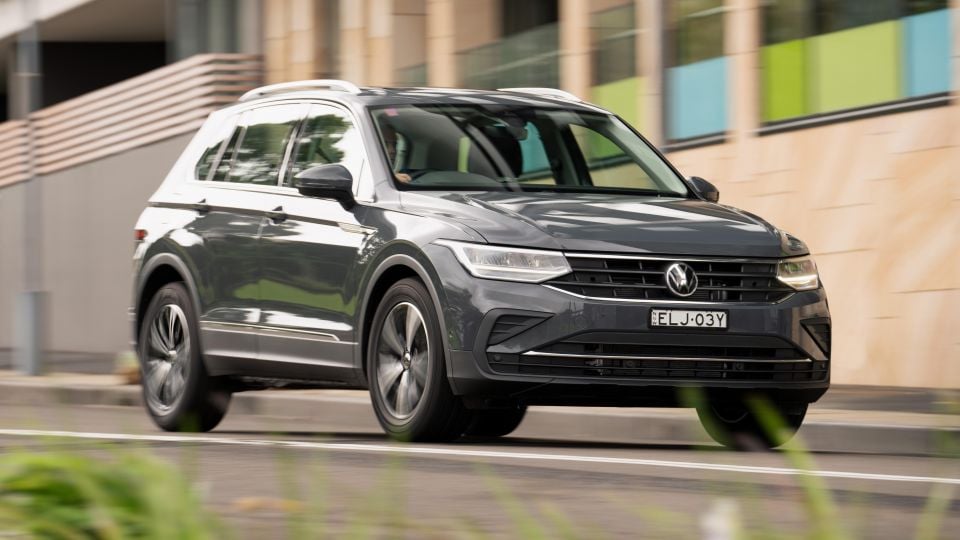
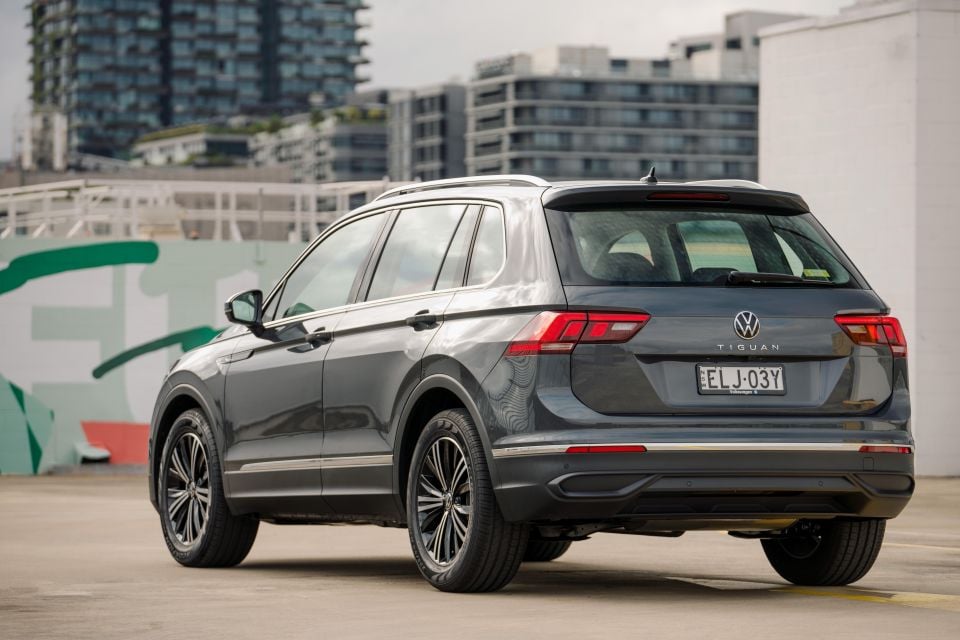

Marketplace Editor
New from
$34,990
excl. on-roads

Marketplace Editor
New from
$34,990
excl. on-roads


Marketplace Editor
New from
$34,990
excl. on-roads

Marketplace Editor
New from
$34,990
excl. on-roads
Quickly see how this car stacks up against its competition. Select any benchmark to see more details.
Where expert car reviews meet expert car buying – CarExpert gives you trusted advice, personalised service and real savings on your next new car.
Volkswagen’s best-seller just got a subtle refresh. No, not the Golf, the Tiguan SUV.
Yes, the mid-sized crossover is Volkswagen’s top-seller globally, so you can imagine they’re taking the mid-life facelift very seriously.
In Australia, the 2021 Volkswagen Tiguan range has not only bumped up prices but also significantly bumped up the standard features list.
There’s more technology, more features and more variants to go up against more competition – the Medium SUV segment is Australia’s largest and most competitive. How does it stack up?

The 2021 Volkswagen Tiguan line-up is priced as follows:
Note: All prices exclude on-road costs
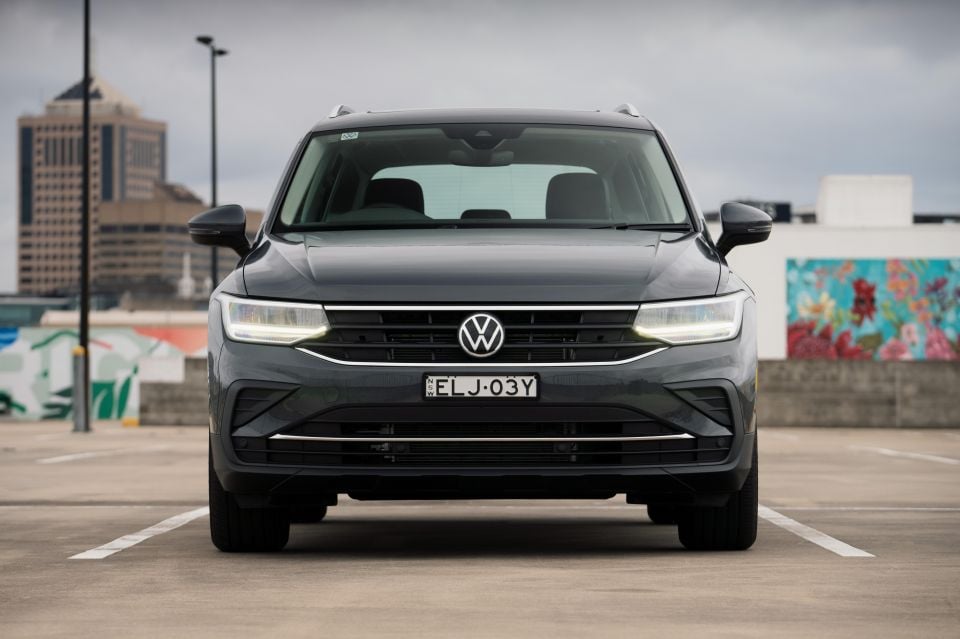
On test we have the entry-level Tiguan 110TSI Life fitted with the optional Luxury Package ($5000) – inclusions detailed in the next section. The Dolphin Grey metallic paint commands an additional $800.
The vehicle you see here is $45,490 before on-roads. For reference, the price of entry for the pre-facelift range was $34,490 before on-roads, although the 2021 Life has a lot more standard equipment than the outgoing 2020 Trendline.
At that price, the base Tiguan competes with mid- to high-grade versions of mainstream rivals, while it also is knocking on the door of base premium competitors including the related Audi Q3.
Key competitors include the Mazda CX-5 Touring ($41,280) and Toyota RAV4 Cruiser Hybrid 2WD ($43,415), along with the Audi Q3 35 TFSI ($46,950) and Volvo XC40 T4 Momentum ($47,490).
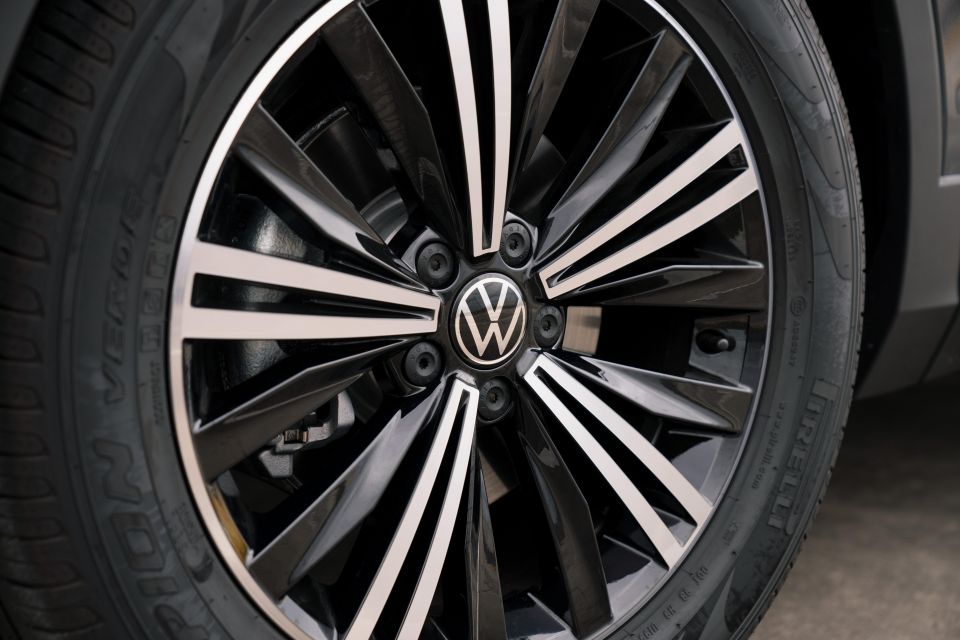
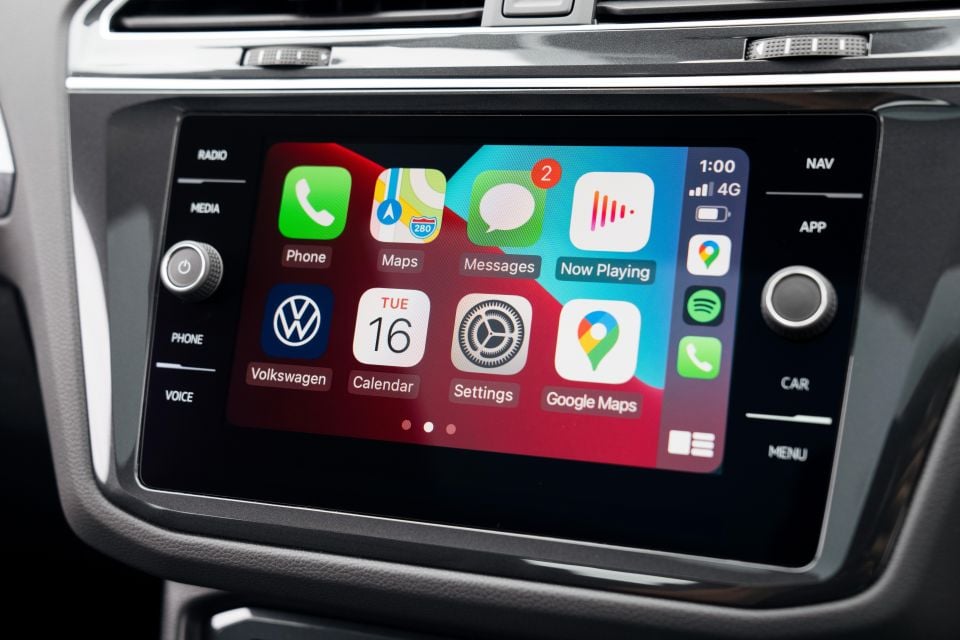
Standard fare in the Tiguan Life includes:
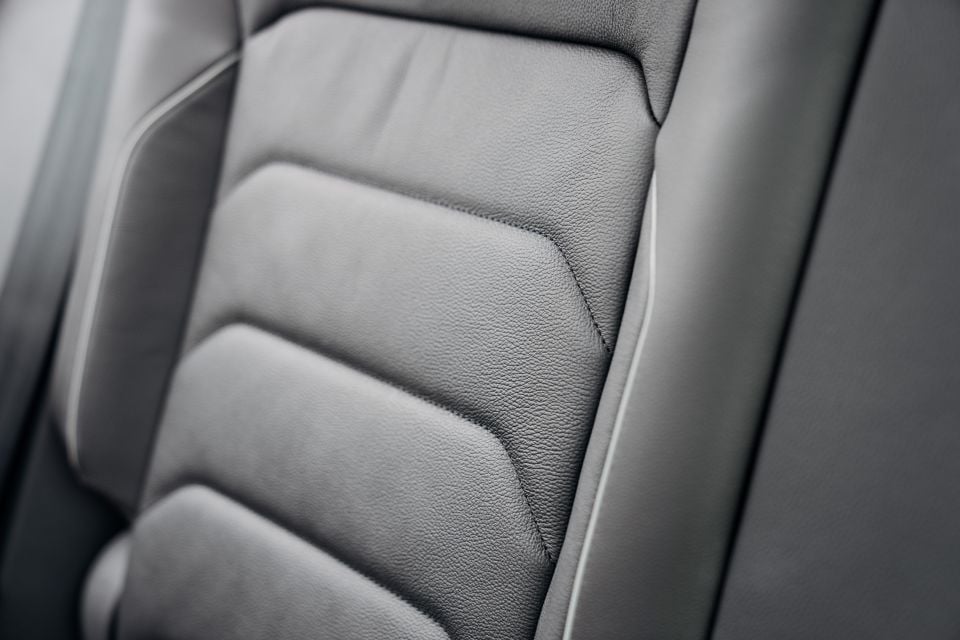

Our test vehicle’s optional Luxury Package ($5000) adds:
As you can see, the ‘base’ Tiguan is pretty well specified even without the optional pack.
With that said, if you want some of the best of what the updated Tiguan range has to offer – think Matrix LED headlights, a head-up display, premium LED tail lights with scrolling indicators, a 9.2-inch infotainment system – you need to move up to higher grades and their respective options lists.
MORE: 2021 Volkswagen Tiguan price and specs
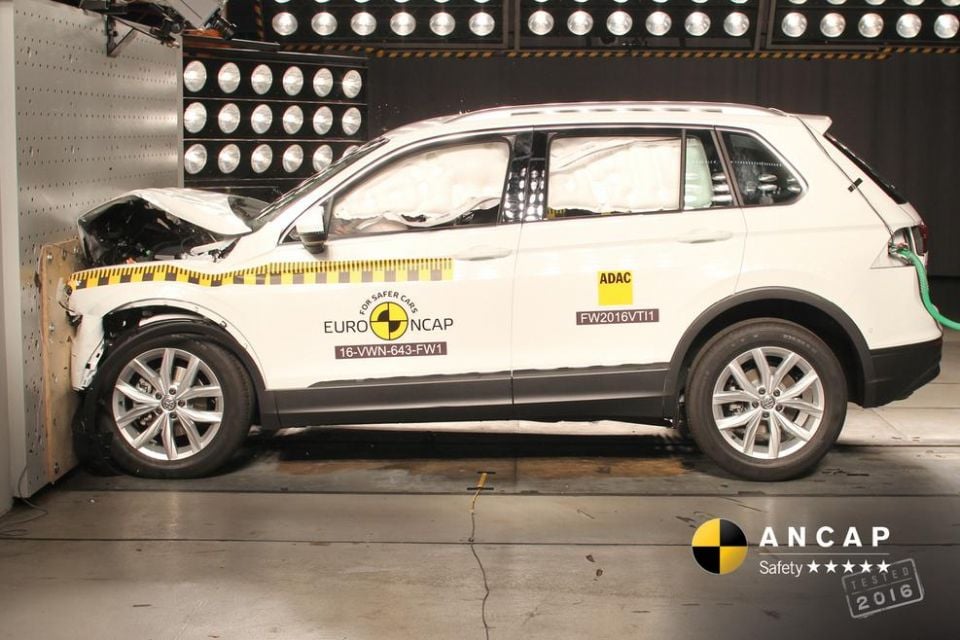
The Volkswagen Tiguan wears a five-star ANCAP safety rating based on tests carried out by Euro NCAP in 2016 on the pre-facelift model.
It scored 96 per cent for adult occupant protection, 80 per cent for child occupant protection, 68 per cent for vulnerable road user protection, and 68 per cent for safety assist.
Standard safety equipment atop the eight standard airbags includes:
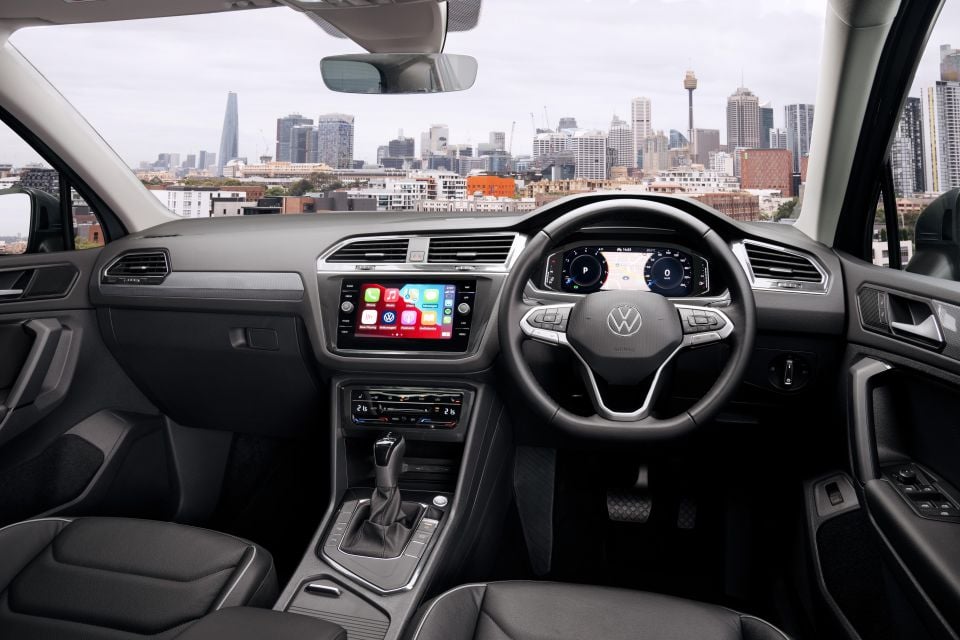
If you thought the exterior changes for this mid-life refresh were subtle, wait until you hop inside.
What’s changed? There’s a new steering wheel, a new shifter, new touch-capacitive controls for the climate control, and Volkswagen’s latest MIB3 interface for the central touchscreen and Digital Cockpit driver’s instruments.
Other than that though, it’s pretty much the same… which isn’t necessarily a bad thing.
As with the pre-update model, there’s plenty of space, ergonomic placement of controls and switchgear, solid build quality, and heaps of storage throughout.
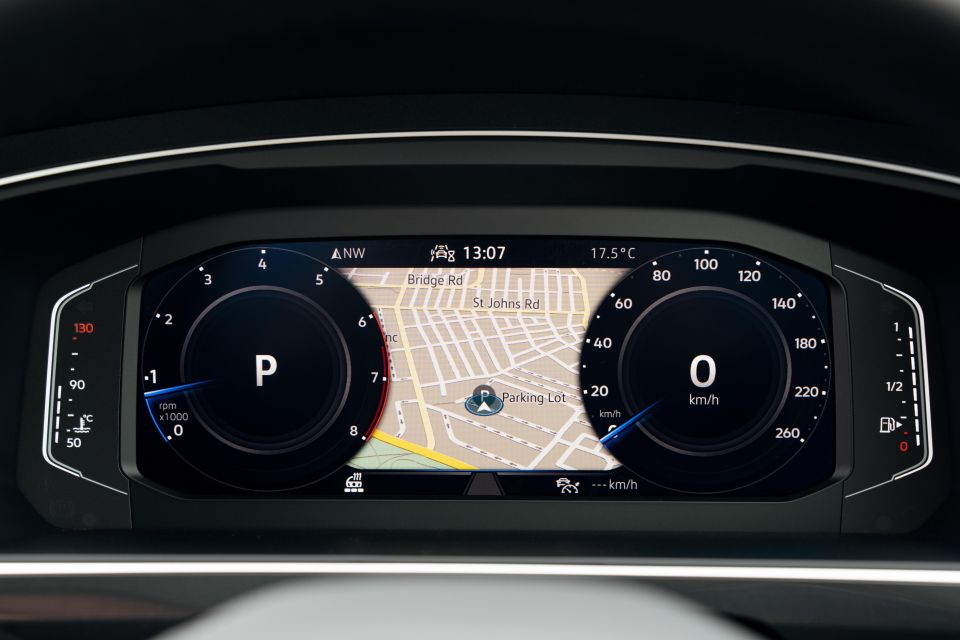
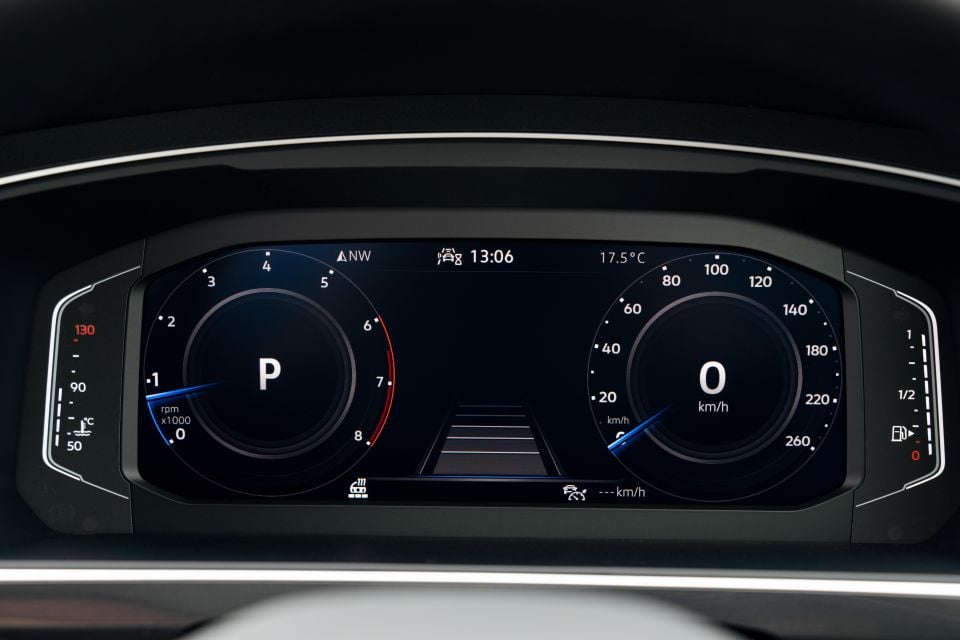
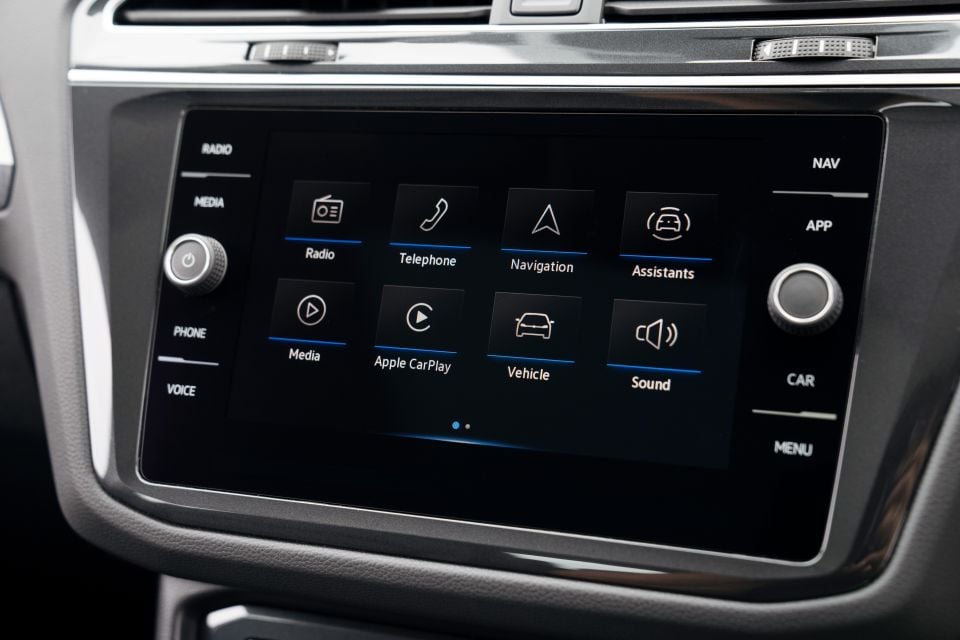
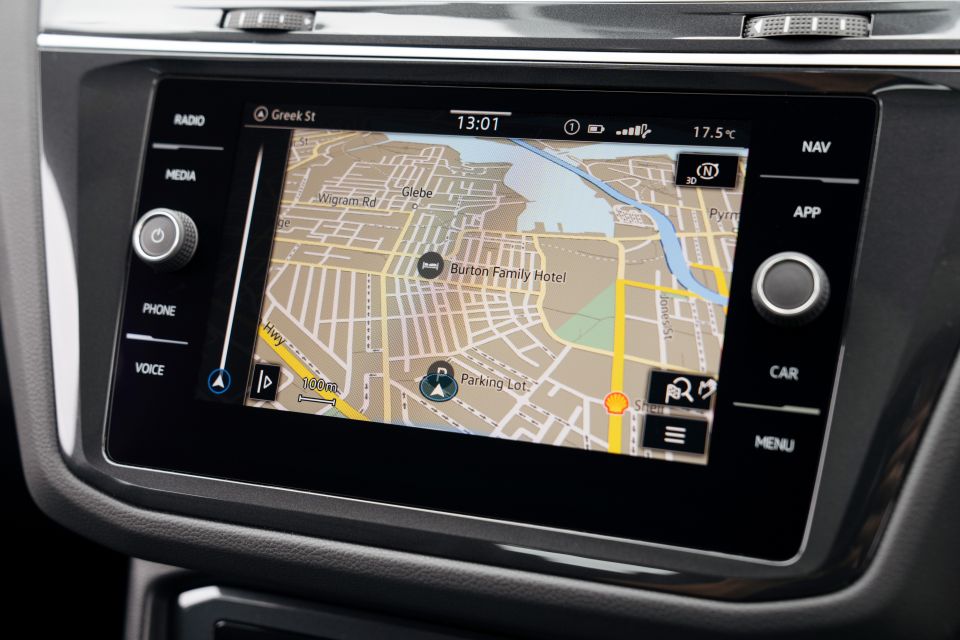
The high-resolution displays offer speedy load times and crisp animations, the touch points are soft, and there’s a balanced mix of padded surfaces and hard-wearing plastics. Oh, and there’s flock-lined door pockets – nice.
Wireless Apple CarPlay and Android Auto are a nice touch, and CarPlay worked pretty seamlessly. Unlike previous Volkswagen infotainment systems, we noticed the travel time and travel distance from Apple CarPlay journeys is projected into the Digital Cockpit map view over the inbuilt maps, instead of blacking them out.
What is weird, though, is the lack of wireless phone charger.
The Tiguan’s cabin doesn’t feel as plush as the Skoda Kodiaq’s or the Audi Q3’s, with more hard plastics and less flair, but Volkswagen’s more functional, even utilitarian approach clearly appeals to the masses.
Comfort for front occupants is good. The optional ‘Comfort Sports’ front seats trimmed in Vienna leather are supportive, though they could use a touch more bolstering. As noted earlier there’s a real feeling of spaciousness even with the optional panoramic sunroof in our test car.
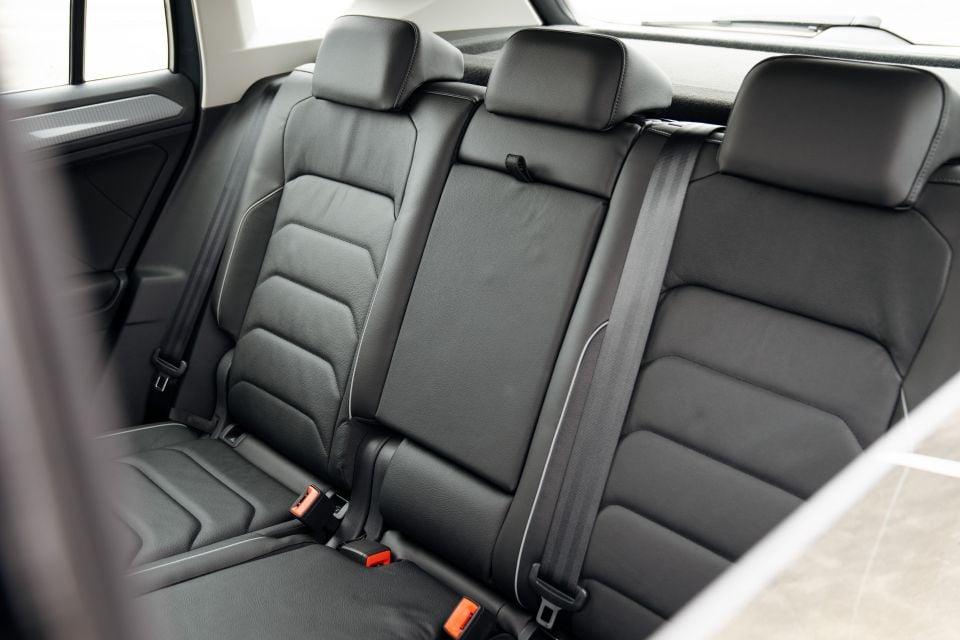
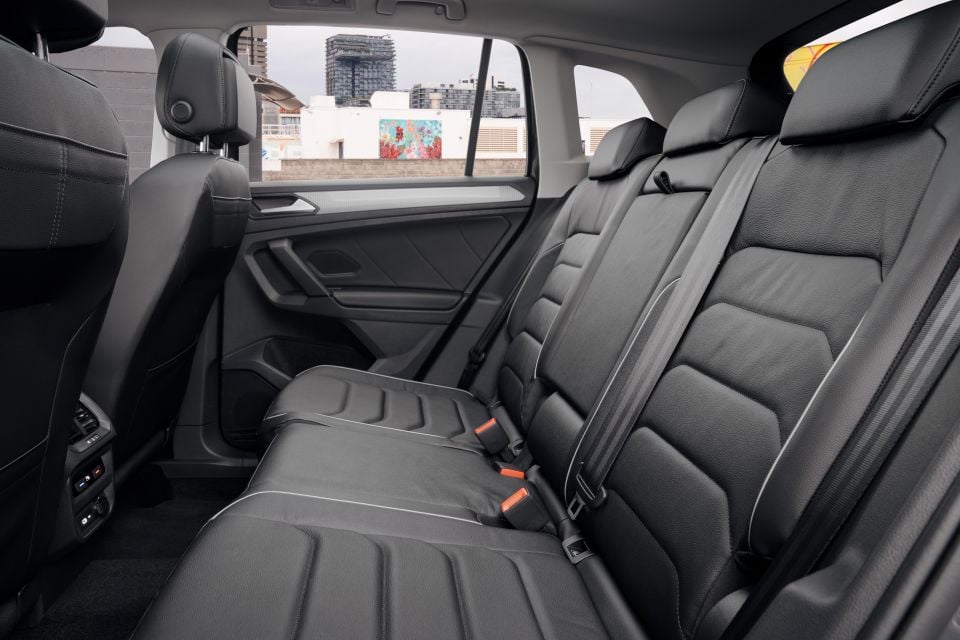
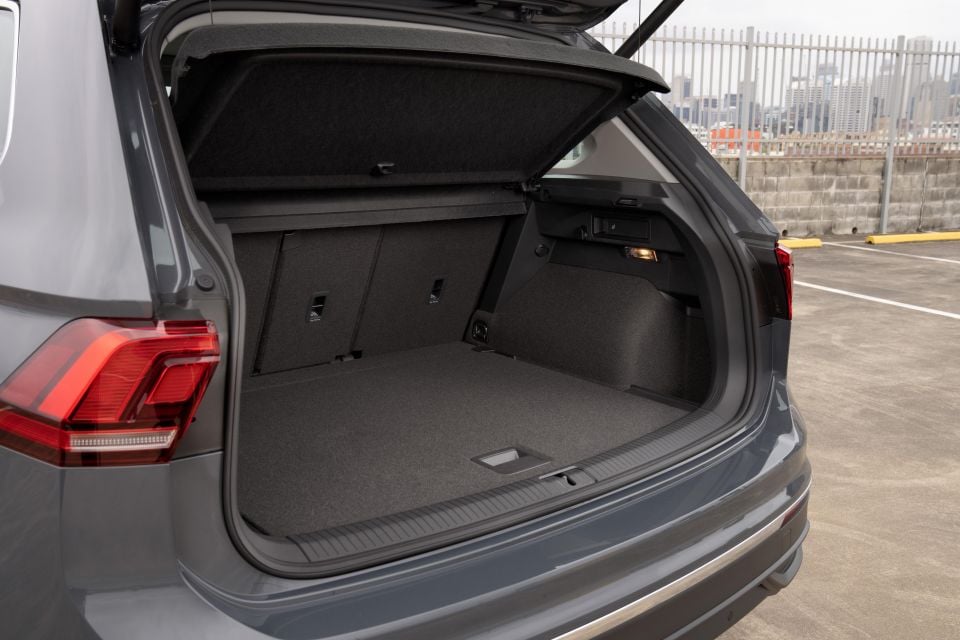
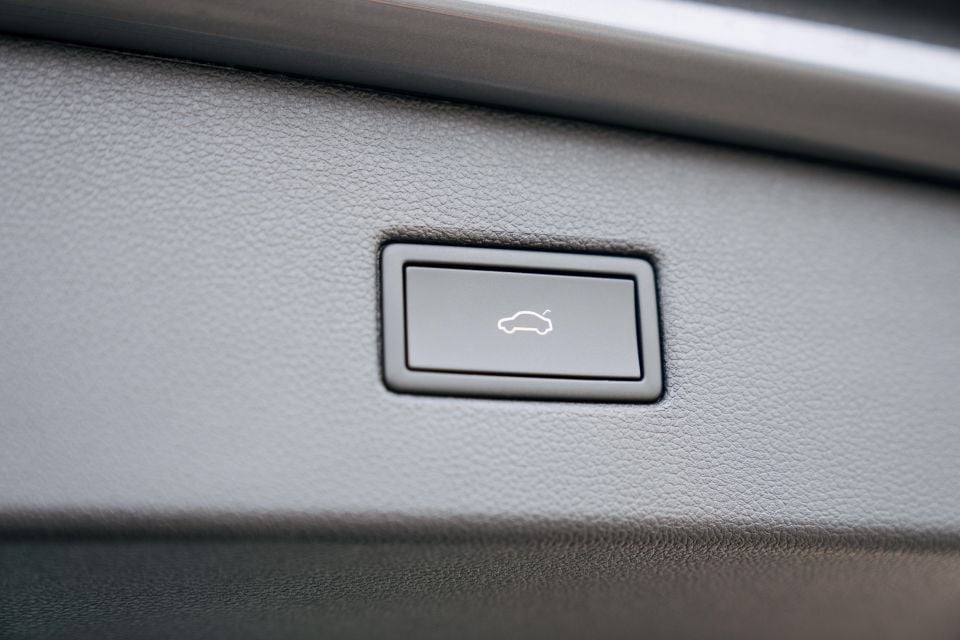
Moving into the second row, there’s a sliding and reclining rear bench that can either prioritise passenger comfort or luggage capacity.
There’s more than enough space for two adults in the rear, even three at a pinch. ISOFIX mounts on the outboard positions also mean the little tackers are catered for too.
A third zone of climate control with air vents lives behind the centre console, along with a USB-C charge point and a 12V power socket.
Second-row occupants are also treated to a fold-down centre armrest with cupholders.
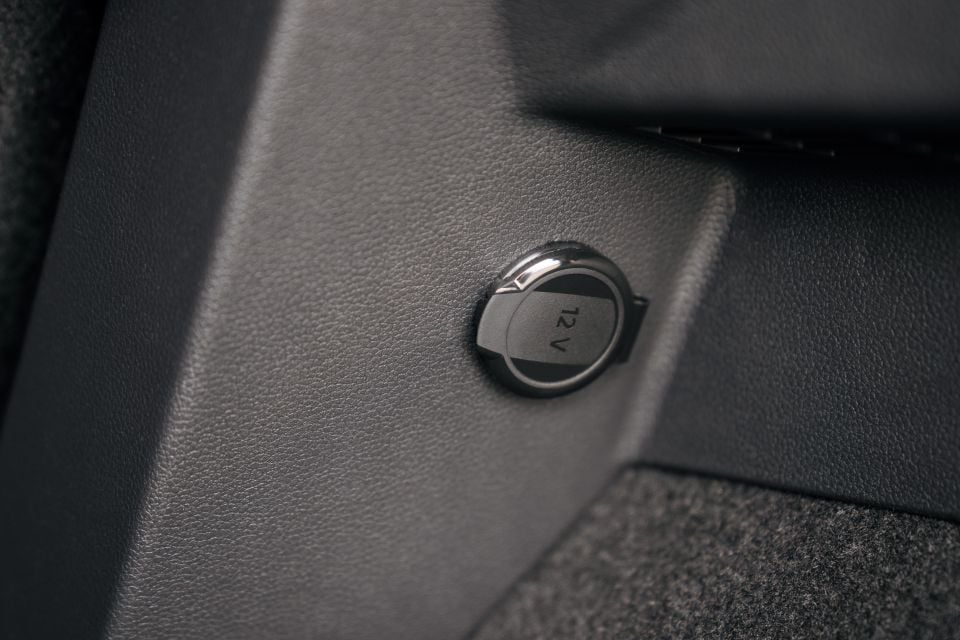

Behind the sliding back seat, there’s up to 615L of cargo volume with the rear pews slid forward, expanding to 1655L with them folded.
In the boot there’s another 12V power outlet, as well as a remote release lever to fold down the second-row seats from the luggage area.
There’s also an adjustable load floor to either minimise load lip and create a flat load bay when the second row is folded, or maximise volume in five-seat configuration.
All versions of the Volkswagen Tiguan feature a space-saver spare wheel.
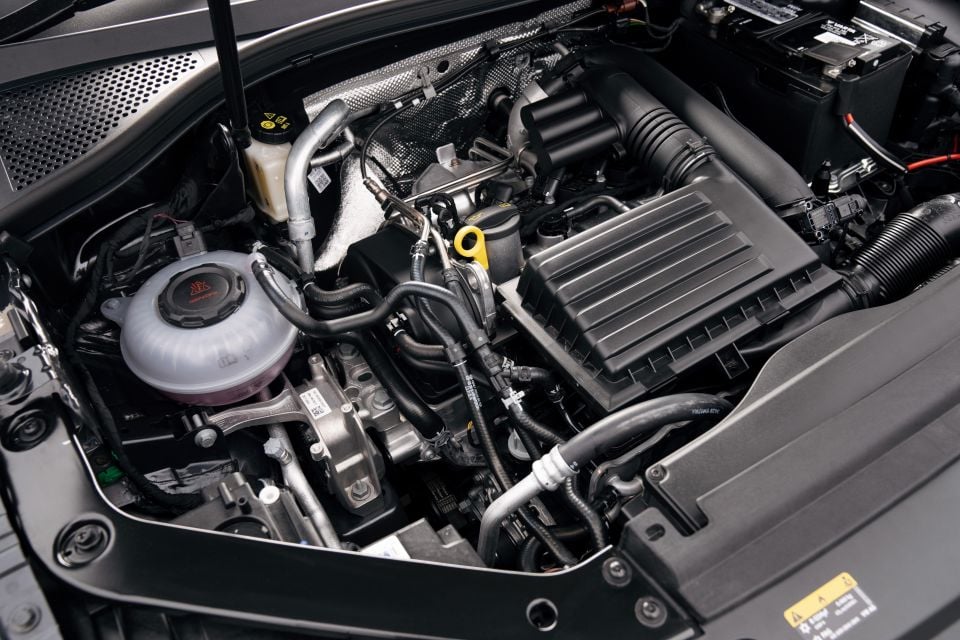
Power in our Tiguan 110TSI tester comes from a 1.4-litre turbocharged four-cylinder petrol engine, developing (you guessed it) 110kW at 5000-6000rpm and 250Nm at 1500-3500rpm.
Drive is sent to the front wheels via a six-speed dual-clutch auto in this specification. Later this year the base Life trim will be bolstered by a 132TSI 2.0-litre turbo petrol with a seven-speed DSG and 4Motion all-wheel drive.
Higher up in the range, the 162TSI Elegance and R-Line grades feature the 2.0-litre ‘EA888’ four-pot turbo made famous by the Golf GTI and R, developing 162kW (@4500-6200rpm) and 350Nm (@1500-4400rpm).

Finally, diesels are back in business in the form of the 147TDI, a 2.0-litre turbo unit producing 147kW (@3600-4100rpm) and a meaty 400Nm (@1750-3500rpm).
For both the 162TSI and 147TDI flagship powertrains, a seven-speed DSG drives a 4Motion all-wheel drive system.
Petrol models require 95 RON premium unleaded as a minimum. The 110TSI variant gets a 58-litre fuel tank, while 162TSI and 147TDI 4Motion models have a slightly larger 60-litre tank. All engines bar the 110TSI get idle stop/start.

Under the tweaked exterior and interior, the Tiguan is fundamentally the same car – so its strengths on the road have carried over.
Based on the Volkswagen Group’s ubiquitous MQB platform, the Tiguan shares its bones with the likes of the Golf, Passat, Arteon, Audi A3, Q2 and Q3, as well as the Skoda Karoq, Kodiaq, Octavia and Superb.
This seemingly never-ending list of relatives means there’s a level of consistency in how MQB-based cars drive – and the Tiguan is no different.
A level of tautness is tuned into the chassis, balancing comfort and dynamics quite well, erring on the side of sportiness ever so slightly.
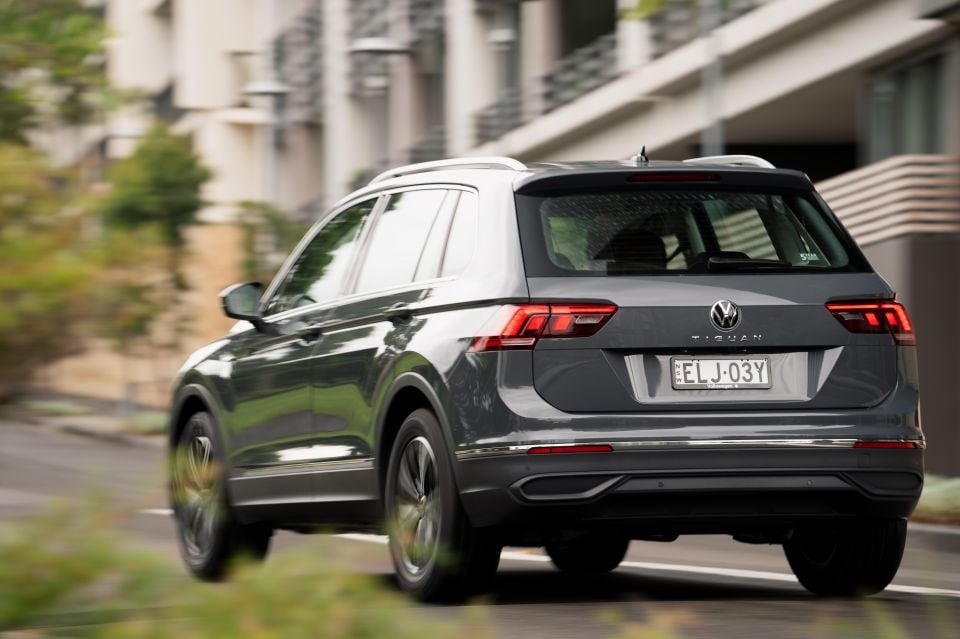
Where expert car reviews meet expert car buying – CarExpert gives you trusted advice, personalised service and real savings on your next new car.
The controls, like the steering and throttle, are progressive, well-modulated, and offer good feedback. For what is a larger car for those stepping out of smaller hatchbacks and sedans, the Tiguan’s steering feels really direct and tight, but with a lighter weight that makes parking it a cinch.
Performance from the 1.4-litre turbo petrol engine is more than enough for a vehicle this size, and it certainly isn’t shamed by direct rivals. Progress is smooth and linear, though you do get the typical split second of hesitation off the line.
It’s a smooth and refined powerplant, and is as happy in town as it is on the freeway. Like the 2020 model, the 1.4 TSI lacks idle stop/start tech in Australia.
While some will applaud as there’s nothing interrupting progress from the lights, it’s a shame Australia continues to miss out on the company’s latest, most efficient engines – especially when Skoda has this motor in the Kamiq and Scala.
It also means the fuel consumption can creep up in high-traffic city driving where the fuel-saving technology does its best work. We saw an indicated 8.9L/100km, which was mostly the commute to and from work (24km each way) mixing freeway and city environments with plenty of stop/start driving.

For me as well, there’s something nice about sitting at the lights with the engine off.
Unlike most entry-level powertrains in the class, the 1.4 TSI rarely feels underdone or lacking in punch for quick getaways in traffic or overtaking on the freeway. Max torque arrives just off idle, and there’s good pull right through the mid-range.
For most people, it’s got more than enough grunt. Plus, Australia’s maximum speed limits of 110km/h-130km/h depending on your state/territory means even the base Tiguan should never reach its limits.
Speaking of freeway speeds, the Tiguan is very much at home at a cruise. The engine sits happily in sixth at around 2000rpm when travelling at 100km/h, while the ride really settles and the roadholding inspires confidence.
Volkswagen’s newly-branded ‘Travel Assist’ feature works beautifully on the freeway, combining adaptive cruise (with stop/go) and adaptive lane guidance functions to essentially drive itself.
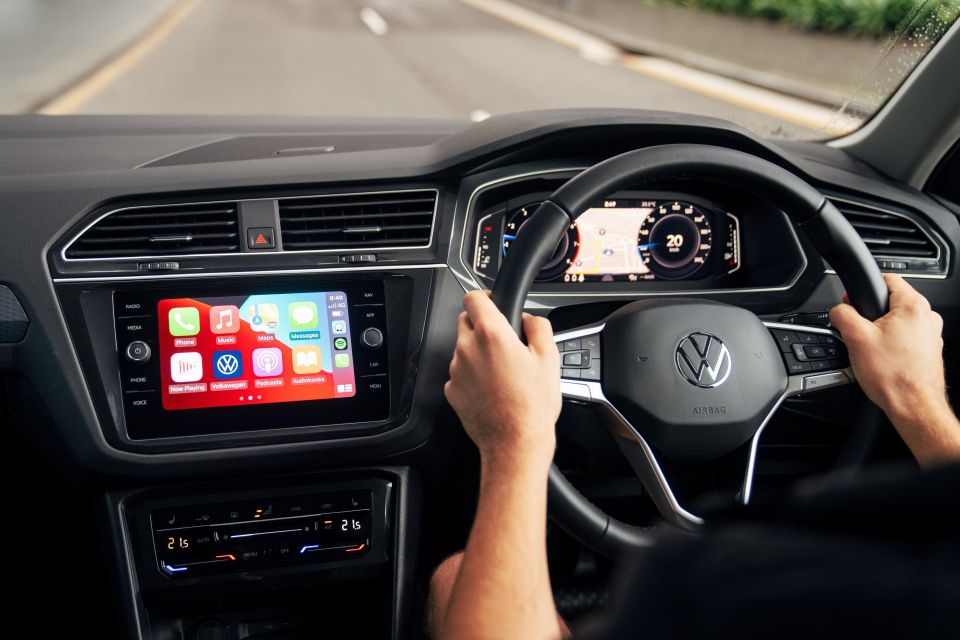
The steering wheel rim is also touch capacitive – it recognises your touch rather than steering inputs – so it won’t ding and chime with notifications asking you to put your hands on the wheel like previous Volkswagens if you let the car do most of the work. My Golf GTI does this all the time and it’s super annoying.
Standard blind-spot monitoring is also a handy feature to have, as is rear cross-traffic alert for when you’re reversing out of tight bays with limited vision.
For nervous parkers, there’s also an auto Park Assist feature that can steer you into parallel or perpendicular bays. The excellent outward vision, however, should mean most buyers won’t have an issue placing the Tiguan in a parking space.
As for handling once things get twisty, the Tiguan genuinely feels like a big Golf. The direct steering means you always know what the front wheels are doing, the taut chassis limits body roll, and there’s plenty of low-down torque to push you out of corners at a decent pace.
There’s also steering-mounted paddle shifters should you want to change gears yourself. Unlike higher grades, there’s no selectable drive modes – thankfully the standard one-size-fits-all setting does everything nicely.
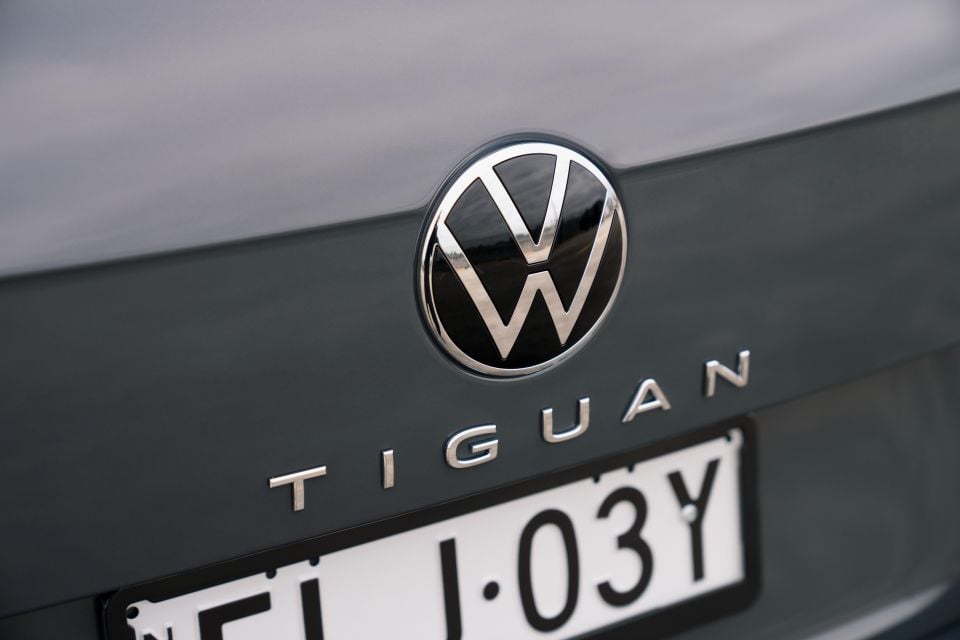
The Tiguan is covered by Volkswagen Australia’s five-year, unlimited-kilometre warranty.
There’s also 12 months of roadside assistance thrown in, which can be renewed each time you service your Tiguan at a participating Volkswagen dealer. This can be done for up to 10 years provided the vehicle is roadworthy.
As for service prices, Volkswagen offers both capped-price servicing and inclusive service packages – the latter available in three- and five-year variants.
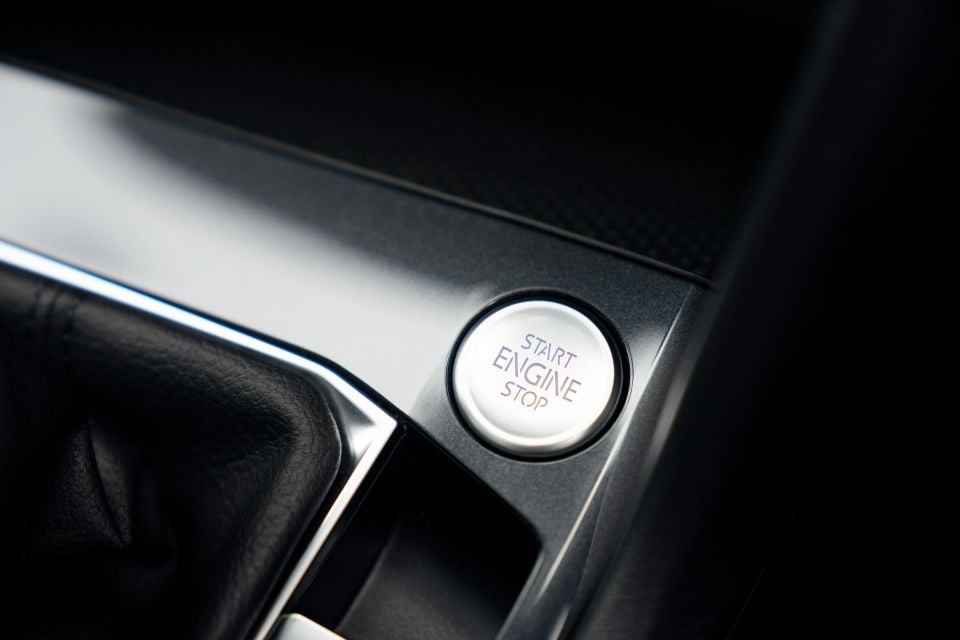
For the Tiguan 110TSI the three- and five-year packages cost $1200 and $2200 respectively, while all 4Motion variants are $1500/$2500. Maintenance is required every 12 months or 15,000 kilometres, whichever comes first.
As noted earlier, we saw an indicated 8.9L/100km in mixed driving, favouring peak-hour commuting to and from the office. It’s not awful, but it’s quite a bit up on the 7.7L/100km combined claim.
Petrol versions of the Tiguan all require 95 RON premium unleaded as a minimum.
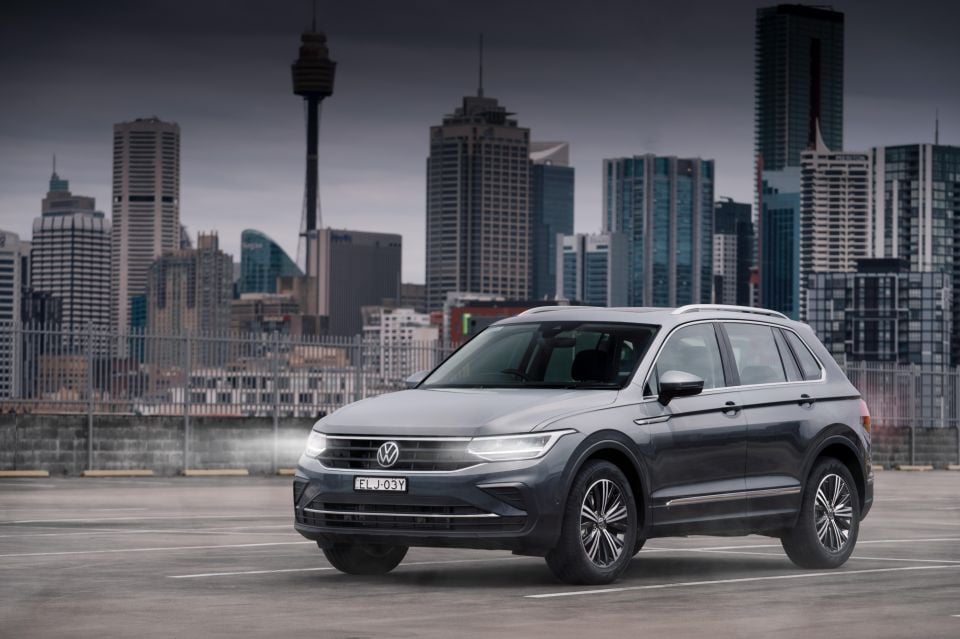
The Tiguan really is the Golf of SUVs. With a combination of class, tech and refinement befitting of a German car, the latest version continues to impress with its all-round competence.
In base 110TSI Life guise, Volkswagen has done its best to offset the hefty price increase by loading it to the nines with equipment, as well as offering an option pack that covers all the basics and then some to fit the ‘luxury’ label.
The 1.4-litre turbo petrol punches above its tiny displacement, and the shared underpinnings with the Audi Q3 shines through in its effortless, comfortable and refined drive.
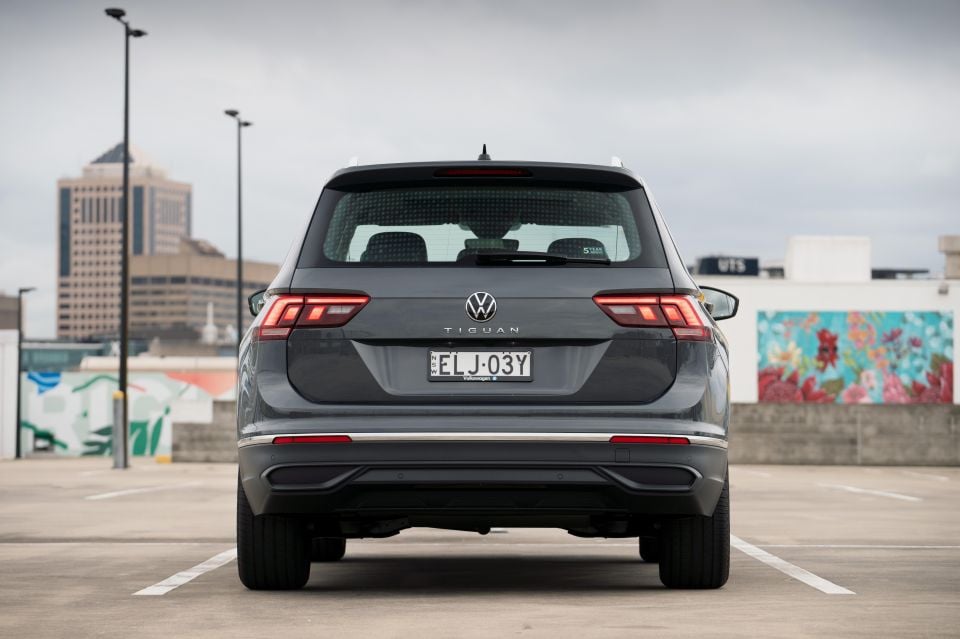
However, the cabin could be a little more upmarket, the price could be a little sharper and many will likely bypass the Life trim to go straight for the more powerful and better-equipped Elegance or R-Line grades for a few grand more.
The Life is best served sans Luxury Pack in terms of value, and the soon-to-arrive 132TSI version for a smidgen under $44,000 makes an even stronger case against rivals with its beefier powertrain and all-wheel drive.
We’ll be driving the 162TSI and 147TDI versions in May, so stay tuned for our launch reviews in the coming months.
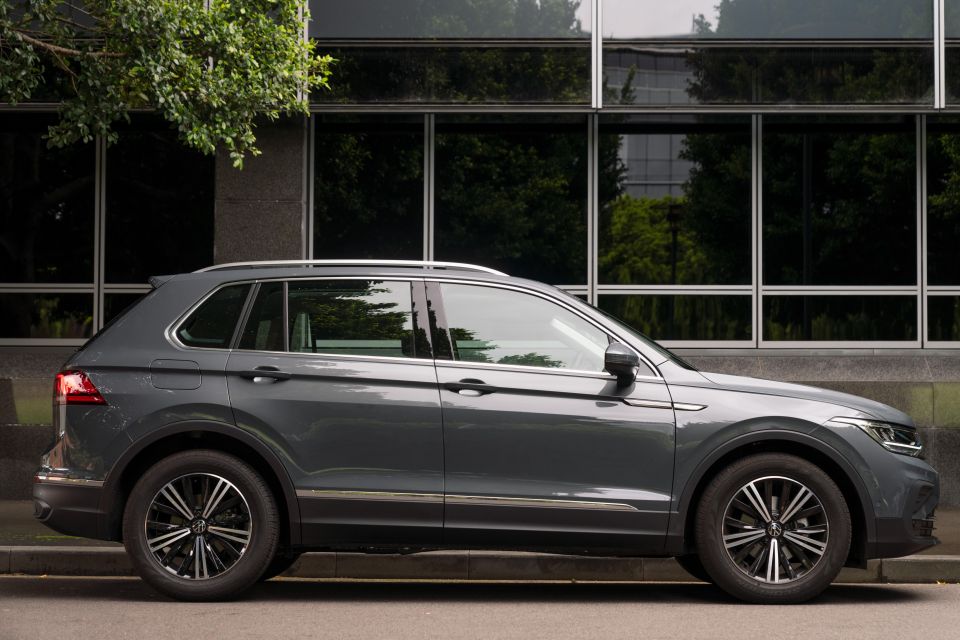
Click the images for the full gallery
MORE: Volkswagen Tiguan news, reviews, comparisons and videos
Where expert car reviews meet expert car buying – CarExpert gives you trusted advice, personalised service and real savings on your next new car.
James is an automotive journalist based in Melbourne, Australia. Before joining CarExpert.com.au in 2020, James has worked at leading auto media outlets including Carsales and CarAdvice, as well as at Pulse agency for Ford Australia's communications team. In 2019 James made Mumbrella's 'Top 20 most prolific web authors in Australia' list after publishing 1,360 articles between March 1, 2018 and February 28, 2019 for CarAdvice. James is also an Ambassador for Drive Against Depression – an Australian charity whose mission is to support mental wellness through the freedom of driving and a shared love of cars.


CarExpert.com.au
4 Days Ago
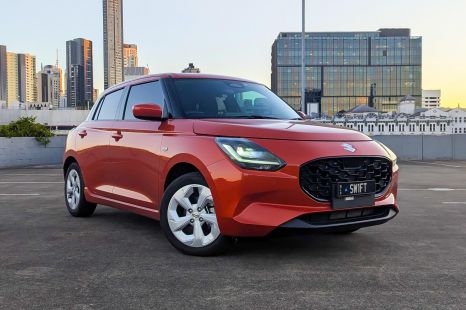

William Stopford
4 Days Ago


Max Davies
3 Days Ago


Josh Nevett
2 Days Ago


Andrew Maclean
1 Day Ago


Shane O'Donoghue
21 Hours Ago